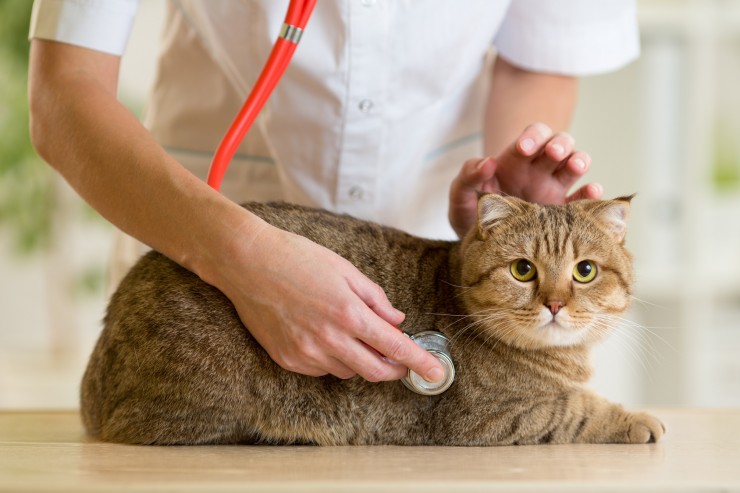Mange is a condition traditionally associated with dogs and is one of the most common skin diseases that they suffer from. However, it can also affect cats because it is caused by tiny mites and these can take up resident on the cat's skin and hair.
What causes mange?
Mange comes in different types depending on the type of mite that has infected the cat. The least common type is Feline sarcoptic mange - this is the type commonly referred to as scabies and is caused by oval shaped, light coloured mites so small that they need to be viewed under a microscope.
Notedric mange is often called feline scabies as it is similar to scabies in dogs and comes from a mite that causes severe skin infections, starting in the area of the face and ears then spreading to the rest of the body. These infections are highly contagious.
Demodectic mange is not common to cats and isn't contagious. It comes from cigar shaped mites that live in a healthy cat's skin and hair and doesn't seem to be able to pass from species to species, though studies are still needed. Dogs are more commonly affected and the condition only affects the animal when the mites are present in very large numbers and can compromise the immune system.
Symptoms and treatment
Mange causes intense itching and frantic scratching in a cat usually around one week after exposure as well as a general sense of restlessness - they are uncomfortable all of the time. It often results in patches of hair loss and a moth-eaten appearance to the skin that is the most commonly known symptom and affects the ears and face most often, though spreads around the body.
If a human comes into contact with a cat that has mange, the mites can cause a reaction similar to mosquito bites, a red bumpy rash. The mites can transfer to humans but tend not to live very long as the conditions are not optimal for them as they are while on a cat.
If you suspect that your cat may have a mange condition, then getting them to vets quickly is important. The vet will then take skin scrapings to confirm the presence of the mites under a microscope, though sometimes other tests may be needed if the mites are deep in the skin.
Once the condition is diagnosed, it is important to keep the cat away from any other pets. Normally the vet will prescribe medication to kill the mites, either by injection, topically or by a shampoo or dip. Antibiotics may be needed to stop the inflammation of the skin while antibacterial shampoos are also sometimes used. Treatments used for dogs should not be used on cats as the properties can have a negative effect on a cat.
Prevention
Malnourished cats are most prone to getting mange, as are those with compromised immune systems, meaning it can happen as a secondary part of another condition. If your cat has mange, a thorough clean or replacement of all of their feeding bowls, toys and bed will be needed. If you think another cat may have the condition, keep yours away from them and consider getting a vet check to ensure the infection hasn't passed along.

 The Importance Of Annual Health Checks For Your Cat
The Importance Of
The Importance Of Annual Health Checks For Your Cat
The Importance Of
 Learn The Virtues Of True Friendship With A Companion Dog
Learn The Virtues Of True Friendship With A Companion Dog
Learn The Virtues Of True Friendship With A Companion Dog
Learn The Virtues Of True Friendship With A Companion Dog
 Can Copper Dog Collars Help To Ease Canine Arthritis?
Can Copper Dog Co
Can Copper Dog Collars Help To Ease Canine Arthritis?
Can Copper Dog Co
 Health And Care Of The Shar Pei Dog
Health And Care O
Health And Care Of The Shar Pei Dog
Health And Care O
 How Closely Related Are The Siberian Husky And The Wolf?
How Closely Relat
How Closely Related Are The Siberian Husky And The Wolf?
How Closely Relat